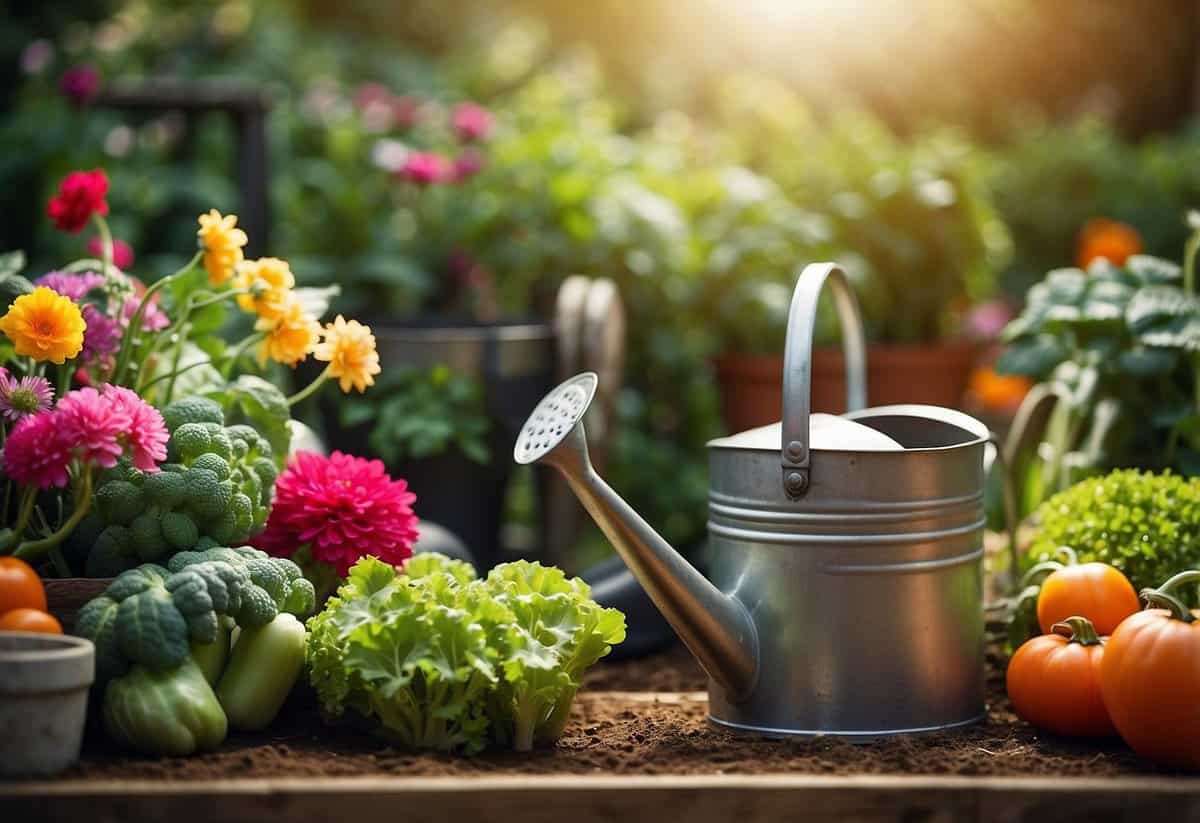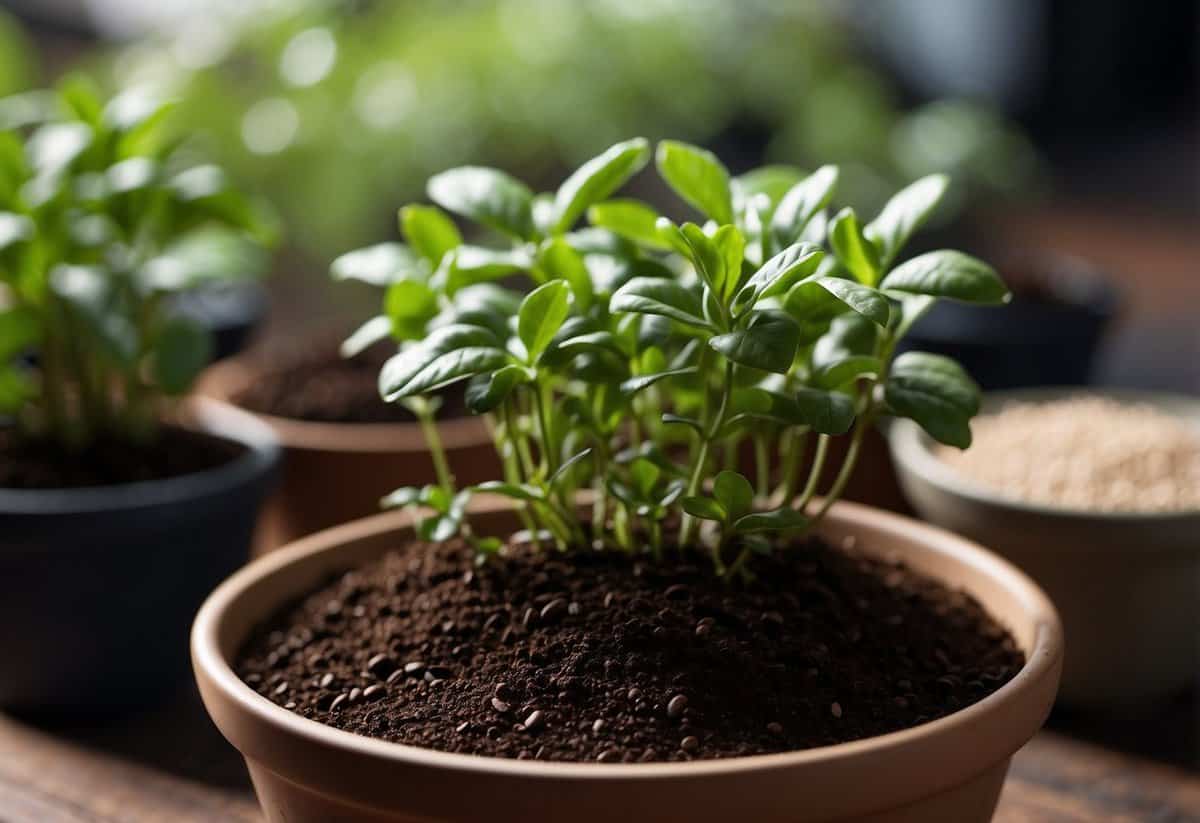Quick Garden Tips: Easy Ways to Boost Your Green Thumb
Gardening can be a relaxing and rewarding hobby, but it can also be a bit overwhelming when you’re just starting out or looking to improve your skills. With the right tips, you can learn how to make your garden thrive without spending too much time or effort. What’s the secret to having a beautiful garden with ease? It’s all about knowing a few quick and effective strategies.

Whether you have a spacious backyard or a small balcony, there are techniques that can help your plants grow healthier and faster. The key is to use the right information tailored to your specific garden needs. Let’s explore some practical advice that will make your gardening experience both enjoyable and successful.
1) Mulch Your Plants

Mulching is a great way to keep your plants healthy. It helps retain moisture in the soil, which means less frequent watering. By adding a layer of mulch, you can also prevent weed growth.
Make sure to avoid piling mulch against the base of your plants. This can lead to diseases and pests. Aim for a 2-4 inch thick layer for the best results.
If you’re new to mulching, check out these tips from Bob Vila. Avoid using rocks as mulch, as they don’t benefit the soil. Stick with organic materials like wood chips or straw.
2) Water in the Morning

Watering your garden early in the morning is the best time. This helps your plants absorb water before the heat of the day.
Morning watering keeps leaves dry, reducing the chances of plant diseases. It also ensures that the water gets to the roots before it evaporates.
For more tips on morning watering, check out Iowa State University’s advice.
3) Compost Kitchen Scraps

Composting kitchen scraps is a great way to reduce waste and help your garden. Collect fruit and vegetable peels, coffee grounds, and eggshells. Avoid meat, dairy, and oils.
Create layers by alternating green waste like kitchen scraps with brown waste like dry leaves. Keep the pile aerated by mixing it once or twice a week.
Compost should be ready in a few months. This nutrient-rich material will improve your soil and help your plants grow healthier and stronger. If you need more detailed steps, check out this guide to composting kitchen scraps.
4) Use Coffee Grounds

You can recycle used coffee grounds in your garden. They help deter pests like slugs, wasps, and beetles. Just sprinkle them around your plants.
Coffee grounds can be mixed with water to make a natural fertilizer. Put two cups of used grounds into a five-gallon bucket of water. Let it steep overnight. This “coffee tea” can then be used to water your plants.
Avoid using coffee grounds near tomatoes. They don’t mix well together.
5) Prune Regularly

Pruning helps your plants grow better. By cutting off old, dead, or unwanted branches, you can encourage new growth. It allows your plants to stay healthy and look neat.
Different plants need different pruning techniques. For example, lilacs and forsythias should have 1/3 of their branches removed each year.
Clean your tools after each use. This keeps them in good shape and helps prevent diseases from spreading between plants. You can learn how to keep your pruning saw clean and sharp by checking out these pruning tips and tricks.
6) Grow Companion Plants

Growing companion plants can boost the health of your garden. Certain plants work well together and help each other grow.
For example, tall plants like corn can provide shade for smaller, sun-sensitive plants like lettuce. This helps keep them cool in hot weather.
Plants such as radishes and lettuce can be grown between larger, slower-growing plants like squash. These quick-growing plants will be ready to harvest before the larger plants need more space.
You can learn more about this method on the companion planting chart for vegetable gardens.
7) Rotate Your Crops

Rotating your crops helps keep your garden healthy. It prevents pests and diseases from building up in the soil.
By not planting the same veggies in the same spot each year, you can reduce problems with soil fertility. For more tips on crop rotation, visit the Old Farmer’s Almanac.
8) Use Raised Beds

Raised beds are a great way to improve your garden’s health and productivity. They allow you to control soil quality and drainage better.
You can plant vegetables closer together in raised beds because you don’t need paths for walking. This maximizes your garden space.
Lay cardboard at the bottom to prevent weeds from growing. This also invites earthworms, which are great for your soil. For instructions on how to create a raised bed, you can check out this step-by-step guide.
9) Attract Pollinators

You can make your garden a buzzing hub by attracting pollinators. Grow flowers with a variety of shapes and colors. Hummingbirds love tubular flowers, while butterflies prefer clusters of small flowers. Bees are fond of yellow blooms.
Create a welcoming environment by leaving parts of your lawn unmowed. This creates habitats for insects and other critters.
Avoid using pesticides. These chemicals can harm the very pollinators you want to attract. Instead, focus on natural gardening practices. For more tips, visit Epic Gardening.
Adding fragrant flowers can also lure bees and butterflies to your garden.
10) Install a Rain Barrel

A rain barrel collects and saves rainwater from your roof. This stored water is great for watering plants.
First, find the right spot for your rain barrel. It should be near a downspout. Remove the downspout using a screwdriver.
Next, prepare the barrel. Rinse it thoroughly. Cut a hole in the lid for water to flow in. You can learn more about this step at Get Busy Gardening.
Finally, place your barrel on a sturdy stand. This makes it easier to access the spigot. Now you’re ready to start collecting rainwater!
Soil Preparation

Getting your soil ready is key to having a healthy garden. You need to check the soil’s pH and make sure it has enough nutrients. Adding organic matter can improve the soil by providing nutrients and improving drainage.
Testing Soil pH
Before planting, it’s important to know your soil’s pH level. Soil pH affects how well plants can take up nutrients.
You can buy a simple soil pH testing kit at most garden stores. Follow the instructions to take a small soil sample and mix it with water. The kit will change color to tell you the pH level. Your plants usually do best with a pH between 6.0 and 7.0.
If the pH is too low (acidic), you can add lime to raise it. If it’s too high (alkaline), sulfur or compost can help lower it. Adjusting pH ensures plants absorb nutrients efficiently.
Adding Organic Matter
Organic matter improves soil structure and provides nutrients. Common choices include compost, aged manure, and leaf mold.
Spread a 2-3 inch layer of organic matter over your soil. Use a garden fork to mix it into the top 4-6 inches. This helps the nutrients reach plant roots.
Organic matter also helps soil retain moisture and improves drainage. Over time, it breaks down and continues to feed your soil. For vegetable gardens, add organic matter each season. For perennial gardens, amend the soil before planting. Visit Garden Design for more tips on preparing soil.
Watering Techniques

Proper watering is essential for a thriving garden. Timing and drainage are critical factors that can make a huge difference to your plants’ health.
Best Time to Water Plants
Watering your garden at the right time increases the effectiveness and reduces wastage. Early morning is usually the best time to water your plants. At this time, temperatures are cooler, so less water is lost to evaporation.
Watering in the late evening can also be beneficial because the cooler temps allow water to seep deeper into the soil. However, be cautious of wet foliage overnight, which can promote diseases.
Using a rain gauge or a simple container like a coffee can help you measure how much water your garden receives. Aim for about 1 inch of water per week, which you can achieve with deep watering sessions.
Effective Drainage Solutions
Proper drainage is crucial to prevent waterlogging, which can damage plant roots. There are several ways to enhance drainage in your garden. Raised beds and adding organic matter like compost or mulch are simple yet effective solutions.
Creating a slight slope in your garden helps water run off more easily, preventing puddles. For container plants, make sure pots have drainage holes. You can also place a layer of gravel at the bottom of the pots to aid in drainage.
Using drip irrigation systems can be very effective. They deliver water directly to soil at the base of the plant, reducing waste and evaporation, and ensuring that the plants get the right amount of water.
Pest Control

Keeping your garden free of pests can be challenging. You can use natural repellents and introduce beneficial insects to help manage unwanted bugs.
Natural Pest Repellents
Natural pest repellents are an effective way to reduce harmful bugs in your garden. Use neem oil or lightweight horticultural oil to spray plants and keep pests away. Neem oil works well against many insects like aphids and spider mites.
Another method is using sand or gravel on top of the soil. This prevents pests like fungus gnats from laying their eggs. Be mindful of overwatering your plants, as wet soil attracts many pests.
You can also try natural soap sprays. Mix water with a small amount of dish soap and spray it on infested plants. This solution works well for soft-bodied insects.
Introducing Beneficial Insects
Introduce beneficial insects to your garden to naturally control pests. Ladybugs and lacewings are great for eating aphids and other small pests. You can buy these insects online or at garden centers and release them in your garden.
Another helpful insect is the praying mantis. They are predators that eat various garden pests like beetles and grasshoppers. Adding these insects can help keep your garden healthier.
By encouraging birds to visit your garden, you can also get natural pest control. Hang bird feeders or birdhouses to attract species that feed on insects. This way, you create a balanced ecosystem in your garden.







